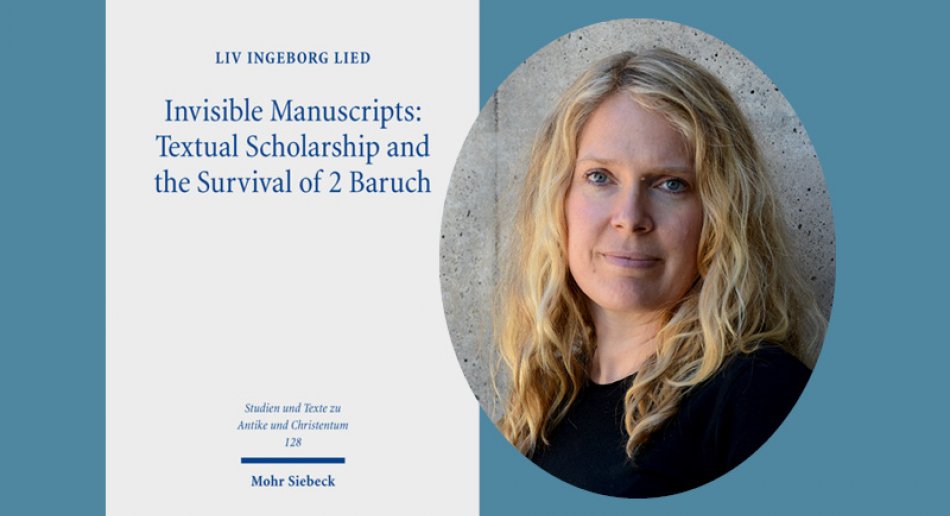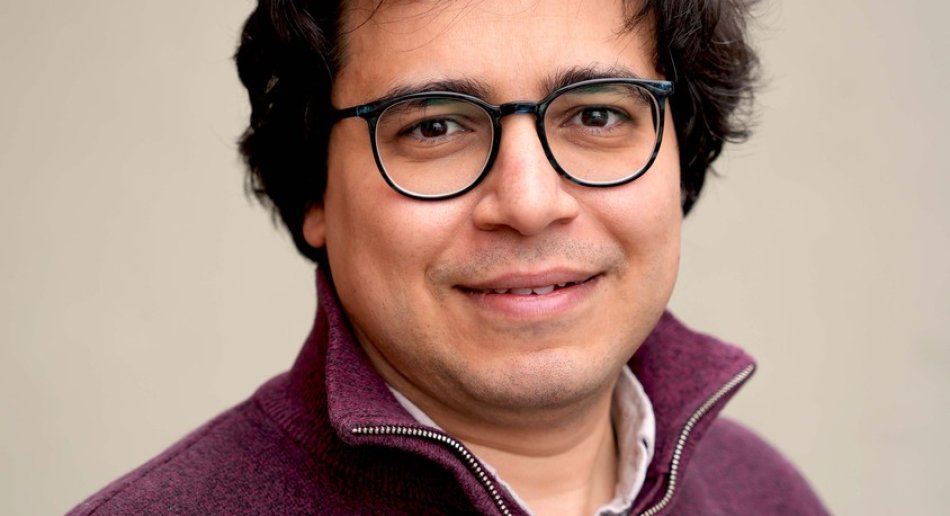
The Material History of Manuscripts
In her most recent publication, Invisible Manuscripts: Textual Scholarship and the Survival of 2 Baruch, Liv Ingeborg Lied examines what changes when we study historical texts as material texts and assume that text and manuscript are closely connected with one another.
Translated by Andrew Wergeland.
Liv Ingeborg Lied is professor of religious studies and head of MF CASR. She has recently published the monograph Invisible Manuscripts: Textual Scholarship and the Survival of 2 Baruch (Mohr Siebeck, 2021).,
- Professor of Religious Studies
- Head of MF CASR
- For many years she has studied Jewish texts from late antiquity and their reception history.
- Most recent publication: Invisible Manuscripts: Textual Scholarship and the Survival of 2 Baruch (Mohr Siebeck, 2021). (Open access).
- This book deals with a practice common to many who research texts, that is the fact that they interpret historical texts without simultaneously studying the manuscripts that the texts are handed down in. In other words, they treat the texts as immaterial texts, as literature. The text that is copied in a manuscript is then a «witness» of an ancient text, while other functions that the manuscript had in the groups that created and used it are overlooked. In this book I have asked myself: What changes when we study historical texts as material texts instead and assume that text and manuscript are closely connected with one another? What happens when we take seriously the fact that manuscripts are cultural artefacts that had meaning for their owners and that some groups to this day view as an important part of their cultural heritage?
What happens when we take seriously the fact that manuscripts are cultural artefacts that had meaning for their owners and that some groups to this day view as an important part of their cultural heritage?
Liv Ingeborg Lied
As the title of the book indicates, Lied concentrates on one single text, 2 Baruch. This is an apocalyptic text. It deals with the destruction of the first temple in Jerusalem and relates the visions that Baruch, the scribe of the prophet Jeremiah, receives after the destruction. Work on the book has been comprehensive, both in time and space:
- I have followed the manuscript history of this text, from the oldest Greek fragments from the fourth century and onwards until the youngest Syriac manuscripts from the 1400s. This study has brought me to libraries and collections in London, Milan, Paris, New York and elsewhere. There I have studied the manuscripts and looked at the functions 2 Baruch has in them – why did someone choose to copy this text? I have followed the trails of copyists and active readers who left behind notes in the margins, I have followed the history of manuscripts that have moved from one monastery to another, and I have approached historical usage contexts that the manuscripts were a part of, she tells us.
The Manuscripts' History Reveal an Important Text
- My main find is that our understanding of texts like 2 Baruch changes radically when we study them in the context of manuscripts. Here is an example: Scholars have understood 2 Baruch as a so-called «pseudepigraphic text» from the 1st or 2nd century, that is a text that neither became part of the Jewish nor the Christian Bible. This is an understanding that is based on the assumed origin of the text. But it turns out that all of the manuscripts that include this text are Christian, Old Testament manuscripts. 2 Baruch is found in the oldest Syriac Christian manuscript that contains the entire Old Testament (7th century). The text is also a part of lectionary manuscripts (13th-15th centuries) and in some settings, it was read in church as Biblical text, on Easter Sunday among other occasions. This means that 2 Baruch was read on the most important Sunday of the church year. In other words, when we trace the manuscript history of a text and do not focus merely on the original context, we can see that the narrative about the text changes.
This means that 2 Baruch was read on the most important Sunday of the church year. In other words, when we trace the manuscript history of a text and do not focus merely on the original context, we can see that the narrative about the text changes.
Liv Ingeborg Lied
Changes Our Understanding of Texts
Lied points out that working on manuscripts makes a richer, and perhaps more correct, understanding of texts possible:
- For scholars it is important to study manuscripts because they provide a different access to the text. Sometimes research on the manuscript history can alter our understanding of a text completely. Even though there are few scholars who work with 2 Baruch, there are many who study other historical texts from antiquity and the middle ages without taking the manuscripts seriously as cultural artefacts. For them textual studies that put the manuscripts at the fore can be an important methodological corrective and a contribution to theoretical innovation.
- For the world outside the small circle of scholars, studies focusing on manuscripts as cultural artefacts are important because they direct attention to the groups who created and used the manuscripts. These groups have until now often been overlooked in textual research. This means that we have overlooked how they preserved the text for posterity by copying it, and that we have overlooked the fact that the manuscripts are a part of their material cultural heritage.
Manuscripts Bring to Mind Historical Belonging
- My research speaks to the interest for immaterial and material cultural heritage in several national and international fora, and especially the cultural heritage that historical minorities claim right to. The manuscripts that I have worked with are first and foremost Syriac manuscripts. These are manuscripts made by Syriac-speaking Christians. Syriac Christians were and are a minority in the Middle East. Because of war and unrest, several times they have had to leave areas where they have lived for hundreds of years. In a situation as this, manuscripts have become extra important as identity markers since they are portable and because they bring to mind historical belonging.
- My finds are also a reflection of the critical, postcolonial focus we see in several social debates. My research is a reminder that we must take the manuscripts and the groups that produced them into consideration when we study historical texts, Lied emphasizes.
An Expanding Field
- In recent years, more and more scholars have seen how important it is to take the manuscripts seriously when we study texts from antiquity and the Middle Ages. Several Oslo-based scholars, among others Brent Nongbri, Hugo Lundhaug, Matthew P. Monger and myself, have been part of promoting this view in our fields. Now, an increasing number of scholars are following suit. We see that several of the large conferences in the field are raising the issue and that several recent publications give it treatment, she says.
Research news



